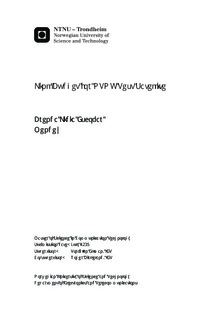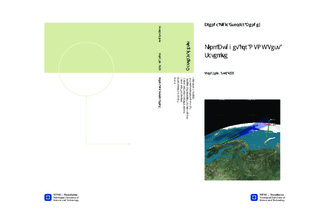| dc.description.abstract | The NTNU Test Satellite, NUTS, is the project of Norwegian University of Science and Technology developed in the academic ambience of CubeSat scheme. Outset had placed three years ago and the plan is to be launched by 2014. Communication system has been previously studied and frequencies allocations were defined on VHF and UHF bands, the channel will carry information of TT&C, commands from station and response from satellite besides transferring of data generated by the payload. Then, analysis in this work was focused on down direction, in terms of power results more critical since transmitted power at spacecraft is restricted.At first, Friis formula was adapted to obtain the basic equation which leads to the power transmitted, then, losses were introduced to figure out the performance along the trajectory of NUTS. Satellite link is vulnerable to different factors, ionospheric and atmospheric attenuation and its influence on wave polarization, losses resulting from misalignment of antennas, free space loss depending on the slant range that makes crucial a geometric analysis of the track. It was included to determine the impact of satellite motion along the orbit in the parameters of link budget equation. In addition noise system directly related with temperature and noise figure of the different elements is determinant on final results. Characteristics of devices in the receivers at each end were taken into consider to model the equivalent noise circuit, then, equations for NUTS noise system at each end were obtained.A simple spreadsheet was first used to know the energy per bit received at Earth station when both antennas are straight pointing each other. Nevertheless, obtain the values under tracking implied more variables, like antenna radiation pattern and its respective gain, that is not as reachable to reckon on simple calculus. In this point, a template in Matlab was used which involves different functions as parameters varying through spacecraft trajectory. Once energy per bit to noise ratio was obtained measurement of link quality was depicted by introducing error probability as the most appropriate parameter on digital communications. Link margin by using binary modulation schemes on frequency and phase were calculated, theoretical probability and simulations by means iterations of bit error probability were compared for the energy per bit received in a range of elevation angles. Furthermore, the fading conditions prompted implementation of forward error control; combinations under the NUTS constraints were studied by using block codes. Bit Error Probability by transmitting a coded message was obtained involving codes Hamming and Reed Solomon, scenario was varied for different bandwidth and symbol rate. Those parameters had an important role for this student satellite and restrictions implied.Finally, visibility time was obtained, defined parameters for transmission and devices chosen complaining with link budget results were used as input data on Satellite Tool Kit software, simulations of tracking were done in a period of one week, data generated related to access time was read in Matlab script and visibility time for different height computed. A previous study of the radio packet with AX.25 protocol was used as a base to estimate the transferred images per day that can be reached when different elevation angles are chosen as minimum. Link margin decreases at low elevation angles, then, a balance between modulation and error control, should be found. Different suitable scenarios are proposed here. | nb_NO |

